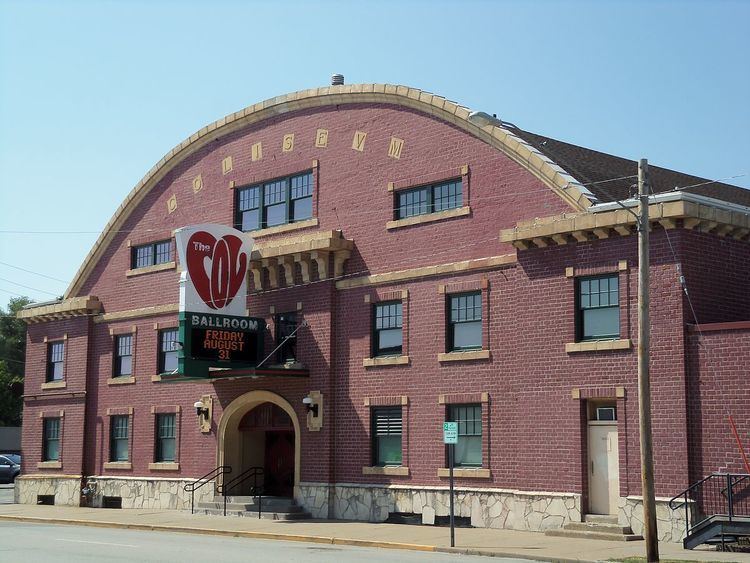Area less than one acre MPS Davenport MRA Designated DRHP August 5, 1998 Phone +1 563-322-4431 Architect Frederick G. Clausen | Built 1914 NRHP Reference # 83002494 Opened 1914 Added to NRHP 7 July 1983 | |
 | ||
Address 1012 W 4th St, Davenport, IA 52802, USA Similar Iowa Reform Building, WD Petersen Memorial, Henry Lischer House, Lindsay Park, St Joseph's Catholic | ||
The Col Ballroom is located in the West End of Davenport, Iowa, United States. It is listed on the National Register of Historic Places and on the Davenport Register of Historic Properties as the Saengerfest Halle.
Contents
La nueva x celencia en the col ballroom davenport ia
History
Davenport’s strong music tradition is due in large part to the influx of German immigrants into the city starting in the late 1840s. They founded numerous music groups in the city before 1900. The groups with longer staying power included: the Liedertafel (founded in 1848), Maennerchor (1851), Strasser’s German Union Brass Band (1856), Germania Band (1883), and three other groups founded in the 1850s included Gesang Chor Der Turngemeinde, Deutscher Saengerbund and Onretti Verein. There were also short lived music organizations: Germania Saengerchor, Gesang Verein Teutonia, Eintracht Glee Club, Claus Groth Singing Society, Thalia Verein, Harrigaria Maennerchor, and the Davenport Saengerbund. In 1858 the city hosted the third annual Saengerfest, or singer’s festival, which drew people from throughout the Mississippi River Valley.
The largest music event in Davenport’s history took place in 1898 when it hosted the 18th annual Saengerfest. It brought together ten local German singing groups as the United Singers of Davenport. Together they organized and hosted the event. The festival included 1200 singers from Davenport, Eau Claire, Wisconsin, Elgin, Illinois, Elkader, Iowa, La Crosse, Wisconsin, Manning, Iowa, Moline, Illinois, Peoria, Illinois, Rock Island, Illinois and St. Louis, Missouri. The event drew German-Americans from throughout the Midwest, and Western Union added extra German operators so as to get news of the festival out over the wires. An estimated 100,000 people attended the four-day event. The festival ended with an outdoor concert at Schuetzen Park that was attended by 12,000 people.
Preparations for the festival included building a 4,000 seat auditorium for the event. A holding company built the wood structure for $4,500. After the festival ended the hall was used as a warehouse. In 1906 a second floor was added by new owners and the building was dedicated as a dance hall called The Coliseum. It was destroyed by fire on October 21, 1913.
In November 1914 the new Coliseum was opened by owner Leo Kerker. The new building is located across the street (W 4th St) from where the original Saengerfesthalle was located. It was designed by local architects Clausen & Burrows. The building has a steel frame covered with brick. The building has an arched roof, and individual tiles across the top of the façade each have a letter that spells out the word “Coliseum”. A sign with the name “The Col Ballroom” hangs over the main entrance. The words are in the shape of a heart. In the early 1990s the building was extensively renovated both inside and out. Ownership of The Col was passed to Don Wachel. The Quad Cities Mexican American Organization has owned the building since 1995. The building has operated as a ballroom and concert venue ever since. A back wall of the building has the autographs of performers who played there. The Col Ballroom was added to the National Register of Historic Places in 1983, the Davenport Register of Historic Properties in 1998 and it was inducted into the Iowa Rock and Roll Music Association hall of fame in 1999.
